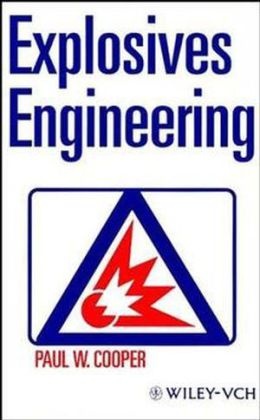Read more
Informationen zum Autor Paul W. Cooper is the author of Explosives Engineering, published by Wiley. Klappentext Explosives Engineering Paul W. Cooper Explosives Engineering presents the basic technologies used in the engineering of explosives and explosion systems. The book's six sections cover the chemistry of explosives, energetics of explosives, shock waves, detonation, and initiation and initiators. An understanding of basic physics, chemistry, mechanics, and mathematics through calculus is assumed. Concise descriptions of the physical processes and underlying theory are expressed in terms as useful for the designer or analyst as for the engineer. Special features include solved problems in each technical area, extensive data on explosive materials and their properties and behavior, and many useful reference lists and bibliographies. This book will help engineers, scientists, and students acquire the engineering tools needed to understand, analyze, and solve a broad range of explosion problems and design applications. It also will interest crime and accident scene investigators, and anyone concerned with the regulatory and environmental issues involved in the transportation, storage, and commerce of explosive materials. Zusammenfassung Die Grundlagen der Technologie der Explosivstoffe - von Chemie und Thermodynamik bis zur Beschreibung von Detonationsprozessen, Druckwellen, Zündung und Scaling - für fortgeschrittene Studenten, Ingenieure und Naturwissenschaftler. Anhand zahlreicher Beispiele, Diagramme und Abbildungen lernen Sie, Probleme der Praxis zu analysieren und zu lösen. Mit einer umfangreichen Datensammlung zu Explosivstoffen und ausführlichen Gerätebeschreibungen! Inhaltsverzeichnis I. Chemistry of Explosives: Organic Chemical Nomenclature/ Oxidation/ Pure Explosives/ Estimating Properties of Explosives/ Decomposition II. Energetics of Explosives: Basic Terms of Thermodynamics/ Thermophysics/Thermochemistry/ Group Addivity/ Reaction Temperature/ Closed Vessel Calculations/ Estimating Detonation Processes III. Shock Waves: Qualitative Description of a Shock Wave/ The Bead Model/ Rankine-Hugoniot Jump Equations/ Interactions of Shock Waves IV. Detonations: Detonations, General Observations/ Real Effects in Explosives V. Theories of Initiation: Nonelectric Initiators/ Hot Wire Initiators/ Exploding Bridgewire Detonations VI. Engineering Applications: Theories of Scaling/ Acceleration, Formation, and Flight of Fragments/ Blast Effects in Air, Water, and on the Human Body/ Scaling Craters/ Jetting, Shaped Charges and Explosive Welding/ Explosive Welding....

